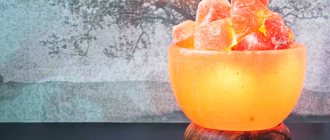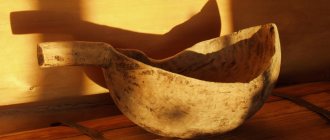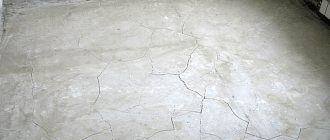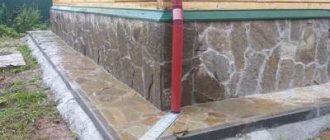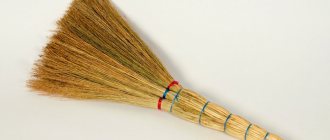Once you enter the steam room, heavy thoughts disappear from your head, your mood improves, and your body relaxes. In many ways, this is facilitated by the very atmosphere of the bathhouse, its spirit. To enhance this effect, the ancient Aztecs threw bunches of dry grass onto the coals, and our ancestors used various types of firewood and brooms, or watered the stove with water in which medicinal herbs were steamed. Later, the herb that was brewed for use in the steam room began to be called “sauna brew.”
What is a steam bath?
Bath steaming is nothing more than dried medicinal herbs, crushed to a powder. They are stored in canvas, linen or chintz bags, and are used as needed to create the desired atmosphere or obtain a therapeutic effect in the steam room.
Probably, our ancestors used bunches of dried herbs as steaming, which were stored hanging in attics and sheds. Herbs in the bathhouse were brewed with boiling water, and the broth was splashed onto a hot stove or stones. When it evaporated, the air was filled with various substances (phytoncides, essential oils, etc.), which produced the desired effect.
Today, it has become inconvenient to store herbs for baths in the form of bunches, so they began to chop them up and package them in small bags. This is how the bathhouse steamer appeared. It began to be used along with kvass, beer and herbal infusions, which were previously used in the steam room.
Unlike infusion, steaming is stored in dried form for quite a long time, and before visiting the bathhouse it is quickly brewed with boiling water. The infusion is prepared from dry or fresh herbs and stored in liquid form. Its shelf life usually does not exceed several days if the base of the infusion is not alcoholic. But alcohol-based tinctures are also used, which can be stored no less than ready-made bath infusions.
FAQ
Are there any restrictions on aromatizing steam in a sauna?
A steam room with scented air is not recommended for people suffering from epilepsy, bronchial asthma, ischemia, acute infectious diseases, angina pectoris and allergies.
What plants can be used to create disinfecting steam in a steam room that is safe for humans?
Rowan has strong disinfecting properties. Its scent will help quickly restore vitality.
Is it possible to add herbal infusion to a steam generator?
You can, but only in a special phyto-container. You cannot pour herbal infusions directly into the unit.
How to choose plants and herbs for making tea and infusion?
The herb for the bath is selected taking into account the characteristics of its action. As a rule, medicinal herbs are used, from which craftsmen prepare steaming for the bath, even with their own hands.
The most popular in our country are:
- Sagebrush. Wormwood decoction vapors have a strong antimicrobial effect, so wormwood-based sauna steaming is used in the fight against colds, chronic diseases of the respiratory system and ENT organs, and other infections. It is believed that the aroma of wormwood increases performance, physical endurance, improves concentration and memory, helps to collect thoughts and make difficult decisions. It is used as a natural immunomodulator and regulator of digestive processes.
- Mint. Our ancestors believed that the aroma of mint clears the mind and helps thought processes. It treats colds, relieves cramps and headaches, helps cope with nausea and general malaise.
- Melissa. A recognized remedy in the fight against physical fatigue, tension and pain in muscles, joints, and back. Helps relieve itching after bites of blood-sucking insects, relaxes, soothes and puts you in a peaceful mood. Normalizes sleep, but at the same time eliminates increased drowsiness.
- St. John's wort. Contains phytoncides that have antiviral and antimicrobial effects. When steamed, they are released into the air and enter the body with breathing. It has an antidepressant effect, helps relieve pain and inflammation, improve skin condition and get rid of various rashes.
- Chamomile. The most affordable and popular plant. It is famous for its disinfectant, anti-inflammatory, soothing and wound-healing properties. Its aroma helps to calm down, get rid of stress, and relax after a hard day.
- Hop. At first, its aroma has a strong relaxing effect; it is not for nothing that a person who has lost control over emotions, movements and feelings is said to be “tipsy.” But this is a temporary effect. After visiting a steam room with a hop brew, a feeling of vigor appears, your mood improves, and your overall vitality rises.
- Linden. One of the best remedies for treating diseases of the respiratory system and cleansing the body of metabolic products (“toxins”). It has a pronounced diaphoretic effect, which is enhanced in the bath due to high temperature and steam pressure. With sweat, excess intercellular fluid comes out, swelling is relieved, and unnecessary and often toxic substances are removed. Linden steaming is widely used for cosmetic purposes - it helps fight excess weight and cellulite, improves skin condition, removes bags under the eyes, and makes age-related changes less noticeable.
- Yarrow. Contains many biologically active substances (essential oils of flavones, alkaloids, resins), due to which it has anti-inflammatory and antimicrobial effects, improves appetite and normalizes digestion. This plant contains valeric acid, which helps normalize sleep, relieve psycho-emotional stress, and eliminate anxiety and stress.
- Horseradish. It’s hard to imagine, but this plant is also widely used to prepare steaming for baths. Anyone who has managed to take root in their garden can prepare it with their own hands. The tart aroma of horseradish tones well, increases performance, and helps cope with any infections and colds.
- Black currant. To prepare steaming, its leaves are used, which are preferably collected at the beginning of summer, when the concentration of biologically active substances in them is maximum and toxins are insignificant. The aroma of black currant and the flavonoids it contains helps relieve tension, get rid of stress, improves mood and puts you in a positive mood.
By combining herbs with each other, various preparations are prepared. For a bath, you can use a combination of any of the listed herbs - they are all in harmony with each other.
Important! Be sure to familiarize yourself with the effects of herbs, indications and contraindications before using them in a bath. You need to be careful when using herbs if you are prone to allergic reactions.
How to make a park with your own hands?
Knowing which herbs can be used for a bath, it is easy to prepare a bath infusion with your own hands. First of all, you will need dried herbs for this. You can purchase it at the pharmacy or prepare it yourself.
In the first case, you need to pay attention to the shelf life of pharmaceutical raw materials and their storage conditions. Preference should be given to hermetically sealed (wrapped in film) boxes in which the grass is packaged in bulk. Herbs in individual bags are less suitable for making teas, because due to the high degree of grinding they in most cases lose their aroma.
If you harvest the grass yourself, you must follow the rules and terms for its collection. Most plants are harvested during the flowering period, preferably in the morning, in dry weather. Herbs should be dried in a well-ventilated area, preferably hanging. You can lay out plants on paper or fabric, but on the condition that they are regularly turned over and the lining is changed.
When the herb is prepared, you will need small (about 3x7cm) linen bags. The ideal option is bags made of burlap or canvas; they will allow water to pass through well. But you can sew them from chintz, cotton fabric or old waffle towels. For each bag you need to prepare a tie so that you don’t have to look for it later.
Important! The bags should be well stretched and ironed on both sides. This will prevent the herbs from being spoiled by mold fungi and other microorganisms.
Having finished with the preparations, you can begin the process of creating steaming. For this:
- the prepared herbs are crushed, the optimal particle size is about 3x3 mm;
- Spoon the crushed herbs into bags; you can mix several types of herbs in one bag;
- The bags are tightly tied with a drawstring.
Ready! All that remains is to sign the bags and put them away for storage in a safe, not damp, place.
How to cook
Currently, specialized stores and even supermarkets offer a wide range of different types of herbs and combinations of herbs for steaming at an average price of 100 - 150 rubles per package of 50 g.
But you can prepare a herbal mixture for steaming in a bathhouse yourself. This is a longer but very exciting process.
To do this you need:
- In the morning, in dry weather, collect medicinal plants in accordance with their ripening time. Collect herbs away from roads, factories and factories. Do not pick them near sown fields: the soil in such places is oversaturated with nitrates and pesticides. Do not take plants that show signs of rotting or insect damage.
- Dry the herbs in a dry, dark room, preferably hanging, tied in bunches. You can also spread the collection on paper or cloth, but then it needs to be stirred and turned over regularly.
- Grind the herbs into fragments no larger than 1x1 cm to preserve their healing properties and aroma. Don't turn them into powder!
- Pack the resulting raw materials into glass jars and close with tight lids. Label the jars indicating the date of collection, since herbs have different shelf life. Mint, thyme, wormwood, nettle, sweet clover, currant leaves are good for 2 years. St. John's wort, immortelle, coltsfoot must be used within 3 years. Chamomile, St. John's wort, meadowsweet are good for 4 years.
- Before steaming in a bathhouse, place the herbs in a fabric bag. To make it, you can use cotton, chintz or old waffle towels. Secure the filled bags with ties.
How to use steaming in a bathhouse?
So, we have a ready-made steamer for the bath at our disposal. How to use this miraculous remedy?
The recipe is very simple. After heating the bathhouse, you need to scoop a little boiling water into the ladle and lower the bag of steaming water into it for 10-15 minutes. Most likely, already at this time the unique aroma of herbs collected together will become audible. Another important nuance is that the roof of the bathhouse should be painted with non-hot paint https://www.krasko.ru/, this will create additional protection.
In the future, before visiting the steam room, you will need to throw this ladle onto the stones, after removing the bag. The aroma will fill the steam room and the steam will become healing! This procedure is well known to those who use essential oils in the steam room. They are often taken to a bathhouse or sauna simply because they do not know what steaming is and how it can be used.
Important! If during a visit to the steam room you experience unpleasant sensations or your health worsens, you should ventilate the room and do not use this herbal composition.
By wisely using different herbs and infusions, you can significantly increase the healing effect of bath procedures, improve your well-being and solve various health problems. The main thing is to use herbs thoughtfully, taking into account the characteristics of their action.
← Previous material
Next material →
Preparing herbal tinctures for the steam room
In Russian culture, settings were prepared in several ways, which are still relevant today:
- make decoctions: pour 100 grams of dried herbs with 3 liters of water and put on low heat for 30–40 minutes, let cool, then use for their intended purpose. The peculiarity of the decoction is that after brewing, the tincture retains its beneficial properties only for two days. Which herbs to use to make a decoction in the steam room is an individual matter, depending on the goals that they want to achieve when visiting the bathhouse. Decoctions are suitable for rinsing the body or hair after completing bath procedures;
- Bath infusions are prepared using hot and cold methods. The first method involves boiling 100–150 grams of herbs in a liter of liquid, the second method allows you to do without boiling. The herbs are poured with cold water, then the infusion is kept for 24 hours and filtered. All that remains is to seal the infusion in jars. Infusions, like decoctions, are sprayed in small portions onto the walls and stones of the steam room. Essential oils from herbs for brewing in a hot bath penetrate the body through the respiratory system and through the pores of the skin;
- The steaming is prepared as follows: a small amount of dried plants is placed in fabric bags. Next, the bags are steamed in hot water for half an hour. Usually, steaming teas are hung in a steam room; they give off a pleasant smell and release beneficial substances.
In addition to these products, traditional bath brooms are well known to everyone. And you can knit them not only from birch or oak branches. Tie brooms from any useful herbs to steam with them in the bathhouse, receiving maximum benefits.
So, it’s clear whether the herb can be used when brewing in baths. The main thing is to do this with a good mood and a desire to get healthier, to receive from nature all the riches that it possesses!

